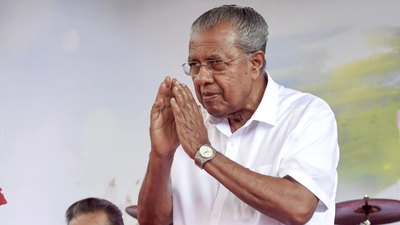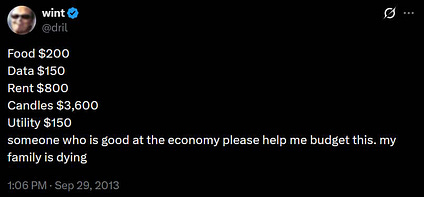Kerala becomes 1st state to eradicate ‘extreme poverty’ – The Times of India

Report on Kerala’s Progress Towards Eradicating Extreme Poverty (SDG 1)
The state of Kerala has officially declared the eradication of extreme poverty, a significant milestone in its commitment to achieving Sustainable Development Goal 1 (No Poverty). The announcement was made by Chief Minister Pinarayi Vijayan during a special session of the state assembly. This declaration is the culmination of a targeted, multi-year strategy, although it has been met with dissent from the opposition, the United Democratic Front (UDF), which boycotted the session, disputing the claim.
A Multi-Dimensional Strategy Aligned with Global Goals
Kerala’s approach to poverty eradication moves beyond simple income metrics, aligning with the multi-dimensional nature of the SDGs. While the World Bank defines extreme poverty as living on less than Rs 180 per day, India’s Multi-Dimensional Poverty Index (MPI) incorporates broader indicators.
Key Frameworks and Data
- NITI Aayog MPI Report (2023): According to this report, Kerala has the lowest rate of multi-dimensional poverty in India, with only 0.55% of its population classified as such. This demonstrates substantial progress towards SDG 1, Target 1.2 (reduce at least by half the proportion of men, women, and children of all ages living in poverty in all its dimensions).
- Extreme Poverty Eradication Project (EPEP): Launched in 2021, this project formed the core of the state’s strategy. A comprehensive ground-level survey identified 64,006 families living in severe deprivation.
- Micro-Planning for Inclusion (SDG 10): Individualized micro-plans were developed for each identified family to address specific barriers, including lack of documentation, housing, income, and access to services, directly contributing to SDG 10 (Reduced Inequalities).
Tangible Outcomes and Contributions to Sustainable Development Goals
The EPEP has yielded measurable results across several sectors, each contributing to specific SDGs. The data reflects a holistic effort to improve living standards and ensure no one is left behind.
Addressing Basic Needs: Food, Housing, and Land
The project focused on foundational securities essential for human dignity and well-being.
- SDG 2 (Zero Hunger): Interventions were made to ensure food security.
- Cooked meals were provided to 2,210 families.
- Food kits were distributed to 18,438 families.
- Daily meals were arranged for 20,648 families.
- SDG 11 (Sustainable Cities and Communities): Access to safe and adequate housing was prioritized.
- 5,422 new houses were constructed for families without shelter.
- 5,522 existing homes were renovated.
- 28.32 acres of land were allotted to 439 landless families.
Promoting Health, Economic Growth, and Institutional Access
Efforts extended to health, economic empowerment, and ensuring access to state services.
- SDG 3 (Good Health and Well-being): Comprehensive health support was provided to vulnerable populations.
- 85,721 individuals across 29,427 families received health services.
- 5,777 people were brought under palliative care.
- Assistive devices were supplied to 579 individuals.
- SDG 8 (Decent Work and Economic Growth): The project facilitated income generation and employment.
- 34,672 families earned an additional Rs 77 crore through unskilled labor opportunities.
- 4,394 families received support for self-employment initiatives.
- SDG 16 (Peace, Justice and Strong Institutions): The program worked to ensure legal identity and access to benefits.
- 21,263 instances of assistance were provided for acquiring official documents, enabling access to government schemes and services.
Analysis of the Article in Relation to Sustainable Development Goals (SDGs)
1. Which SDGs are addressed or connected to the issues highlighted in the article?
-
SDG 1: No Poverty
The article’s central theme is the declaration that Kerala has eradicated “extreme poverty.” It directly addresses the goal of ending poverty in all its forms everywhere. The entire Extreme Poverty Eradication Project (EPEP) is an initiative aimed at achieving this goal.
-
SDG 2: Zero Hunger
The article mentions specific interventions to combat hunger among the identified poor families. It states that the program provided “cooked meals for 2,210 families, food kits for 18,438 families, and daily meals for 20,648 families,” which directly relates to ending hunger and ensuring food security.
-
SDG 3: Good Health and Well-being
The EPEP included significant health interventions. The article details that the project provided “assistive devices for 579 people, organ transplant aid for seven, palliative care for 5,777, and health services for 85,721 people,” demonstrating a clear connection to ensuring healthy lives and promoting well-being.
-
SDG 8: Decent Work and Economic Growth
The project aimed to improve the economic status of families by providing income-generating opportunities. The article notes that “34,672 families earned an additional Rs 77 crore through unskilled labour, while 4,394 families received support for self-employment initiatives,” which aligns with the goal of promoting productive employment and decent work.
-
SDG 11: Sustainable Cities and Communities
A major component of the poverty eradication project was providing access to adequate housing and land. The article specifies that “5,422 new houses were built, and 5,522 homes were renovated. Land totalling 28.32 acres was allotted to 439 families,” directly contributing to making human settlements inclusive, safe, and resilient.
2. What specific targets under those SDGs can be identified based on the article’s content?
-
Target 1.1: Eradicate extreme poverty
The article’s main announcement is that Kerala is “now free of extreme poverty.” It explicitly defines extreme poverty using the World Bank’s metric of “living on less than Rs 180 per person per day,” making this target the primary focus.
-
Target 1.2: Reduce poverty in all its dimensions
The article references India’s Multi-Dimensional Poverty Index (MPI), which considers factors like nutrition, housing, and education. It highlights that Kerala has the lowest rate in the country at 0.55%, and the EPEP’s micro-plans addressed multiple deprivations, thus aiming to reduce poverty in all its dimensions.
-
Target 1.4: Ensure access to basic services, ownership and control over land
The project provided families with access to basic services and resources. The article mentions the allotment of “28.32 acres” of land, the construction of “5,422 new houses,” and assistance with documentation to access government benefits, all of which align with this target.
-
Target 2.1: End hunger and ensure access to food
The provision of cooked meals, food kits, and daily meals to thousands of families, as detailed in the article, is a direct action towards achieving universal access to safe and nutritious food for the most vulnerable populations.
-
Target 3.8: Achieve universal health coverage
The article describes a wide range of health services provided to over 85,000 people, including palliative care and aid for organ transplants. This demonstrates an effort to ensure access to quality essential health-care services without financial hardship for the poorest families.
-
Target 11.1: Ensure access for all to adequate, safe and affordable housing
The construction of thousands of new houses and the renovation of existing ones for the identified families directly addresses the need for adequate and safe housing, which is the core of this target.
3. Are there any indicators mentioned or implied in the article that can be used to measure progress towards the identified targets?
Yes, the article provides several quantitative and qualitative indicators:
-
Indicator for Target 1.1 & 1.2 (Poverty Rate):
The article mentions two key indicators. First, the World Bank’s definition of extreme poverty (living on less than Rs 180 per day), which is the basis for the state’s declaration. Second, it cites NITI Aayog’s 2023 MPI report, stating that “only 0.55% of Kerala’s population is multidimensionally poor,” providing a specific metric for multi-dimensional poverty.
-
Indicator for Target 1.2 (Number of People in Poverty):
The initial survey conducted for the EPEP identified “64,006 families—roughly 0.2% of the state’s population—living in severe deprivation.” This number serves as a baseline indicator of the target population for the poverty eradication program.
-
Indicator for Target 2.1 (Food Security):
The article provides specific numbers of beneficiaries for food support programs, which act as direct output indicators: “cooked meals for 2,210 families, food kits for 18,438 families, and daily meals for 20,648 families.”
-
Indicator for Target 3.8 (Health Coverage):
Progress is measured by the number of people who received health services. The article states that health services were provided to “85,721 people across 29,427 families,” with specific numbers for palliative care (5,777) and other interventions.
-
Indicator for Target 8 (Economic Empowerment):
The article implies indicators related to income and employment generation. It specifies that “34,672 families earned an additional Rs 77 crore through unskilled labour” and “4,394 families received support for self-employment initiatives.”
-
Indicator for Target 11.1 (Housing Access):
The number of housing units provided is a clear indicator. The article reports that “5,422 new houses were built, and 5,522 homes were renovated.” Additionally, “Land totalling 28.32 acres was allotted to 439 families,” serving as an indicator for access to land.
4. Table of SDGs, Targets, and Indicators
| SDGs | Targets | Indicators |
|---|---|---|
| SDG 1: No Poverty |
1.1: Eradicate extreme poverty.
1.2: Reduce poverty in all its dimensions. 1.4: Ensure access to basic services and control over land. |
– Declaration of being free from extreme poverty (defined as living on less than Rs 180 per day). – 0.55% of the population is multidimensionally poor (NITI Aayog’s 2023 MPI report). – Initial identification of 64,006 families in severe deprivation. – 21,263 instances of document assistance to access benefits. |
| SDG 2: Zero Hunger | 2.1: End hunger and ensure access to food. |
– Cooked meals provided to 2,210 families. – Food kits provided to 18,438 families. – Daily meals provided to 20,648 families. |
| SDG 3: Good Health and Well-being | 3.8: Achieve universal health coverage. |
– Health services provided to 85,721 people across 29,427 families. – Palliative care for 5,777 people. – Assistive devices for 579 people. – Organ transplant aid for 7 people. |
| SDG 8: Decent Work and Economic Growth | 8.5: Achieve full and productive employment and decent work for all. |
– 34,672 families earned an additional Rs 77 crore through unskilled labour. – 4,394 families received support for self-employment initiatives. |
| SDG 11: Sustainable Cities and Communities | 11.1: Ensure access for all to adequate, safe and affordable housing. |
– 5,422 new houses were built. – 5,522 homes were renovated. – 28.32 acres of land allotted to 439 families. |
Source: timesofindia.indiatimes.com
What is Your Reaction?
 Like
0
Like
0
 Dislike
0
Dislike
0
 Love
0
Love
0
 Funny
0
Funny
0
 Angry
0
Angry
0
 Sad
0
Sad
0
 Wow
0
Wow
0




















































.jpg.webp?itok=0ZsAnae9#)



























